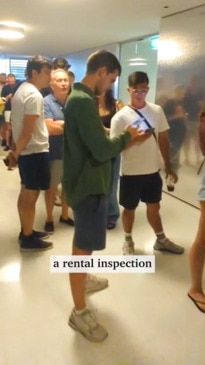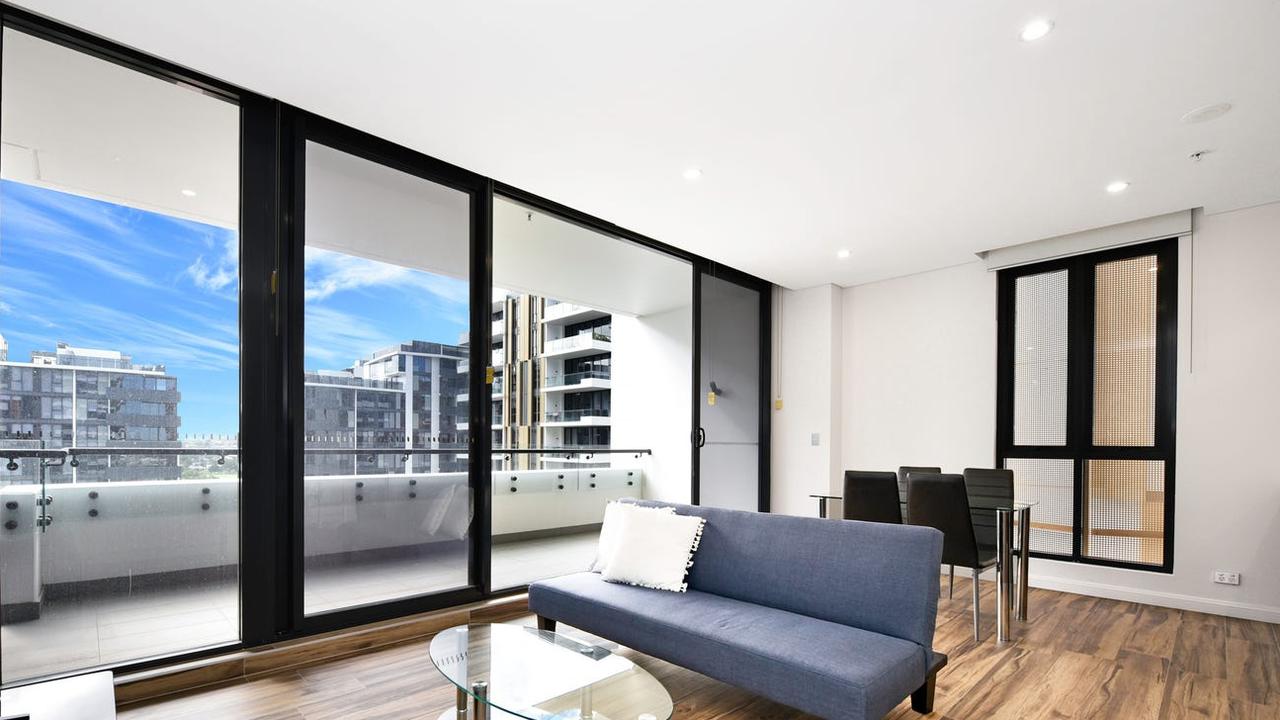NSW rental affordability drops to worst level on record
Tenants on an average income are close to being locked out of the rental market, with the share of rentals deemed affordable hitting an alarming, record low.

Property
Don't miss out on the headlines from Property. Followed categories will be added to My News.
Horror rental conditions have made it the worst time to be a NSW tenant in recorded history.
Alarming PropTrack figures released exclusively to the Saturday Telegraph showed rental affordability has deteriorated to the worst level since in-depth records began.
Only about a quarter of NSW rental properties advertised in December were considered affordable for those earning the state’s median household income of $113,000 a year.
Tenants have never before had so few affordable options, PropTrack noted.
Experts said the appalling rental affordability was unusual historically given Australia was not in a recession and unemployment was low – factors that have often eased pressure on tenants.
PropTrack economist Angus Moore said the current situation for tenants was dire and the result of years’ of “enormous” rent rises coupled with sluggish growth in wages.

“Incomes just can’t keep pace. It’s not even close,” he said.
Those considered lower-income (renters on $69,000 a year, putting them in the bottom third of households) could afford less than 3 per cent of NSW rental stock.
This was if they wanted to avoid spending more than a quarter of their income on rent, according to the PropTrack Rental Affordability Index.
But even those willing to fork up a greater share of their earnings had few options.
A lower-income household prepared to spend 35 per cent of their income on rents could still only afford 16 per cent of NSW rental housing, PropTrack revealed.
It was likely a lower-income household would be able to afford far less rental housing in Sydney, where rents are the highest in the country.
This level of financial strain was worse than during the global financial crisis in 2008 when rental affordability index records began.
Mr Moore said you’d have to rewind to the early 1990s-recession to see anything bordering on the kind of conditions facing tenants today.
MORE: Experts reveal foolproof tips to score a rental
The difference was that the current economy was not receding and a much larger share of households were tenants compared to 30 years ago, he said.
Close to 27 per cent of NSW households rented back in the late 1980s, a quarter of who rented from a housing authority or other government agency.
The proportion of households renting has since swelled to about 33 per cent now, while half as many renters are in government housing.

“In the past, when rental affordability has been really stretched, it was during periods of rising unemployment that followed earlier periods when there was rapid rise in rents.
“We’re not in that kind of environment now. Rents have grown enormously since the pandemic … but there hasn’t been a rapid rise in unemployment.”
WHY THERE IS A RENTAL CRISIS
Recent rent rises came off the back of crippling rental shortages and surging tenant demand, Mr Moore added.
“Migration has been a major factor, because there isn’t enough housing, but it’s not the only factor,” he said.
“Rents were beginning to rise long before borders were reopened and a lot of that was because of a change in housing composition. Renters moved out of share housing, so a household of four people now needed four separate places to stay.”

Real Estate Institute of Australia president Leanne Pilkington said housing shortages could continue to plague the market unless government adjusted course.
She pointed to excessive stamp duty charges as one of the drivers of the shortage as it discouraged families from selling homes that could otherwise be sold to investors, and become rental stock, or first-time buyers who would exit the tenant pool.
“Families are staying in their homes for much longer than they used to and stamp duty is a huge part of that,” she said.
Prospective renters who have had to endure the long lines at open for inspections told the Saturday Telegraph they’re “exhausted”.
Jack Ellis and partner Cecilia Hollins recently secured a rental after first starting their search in October shortly after being told the rent on their old home would go up 30 per cent.

“Every place we went to it’s the same price but lower quality or at a much higher price and has up to 20 or 30 groups with lines down the street,” Mr Ellis said.
Ms Hollins said current rents were difficult to swallow. “The rental crisis has pushed prices up so much more than what my salary has, so that’s been pretty killer,” she said.
“I can’t even imagine what people who have kids or people that don’t have stable jobs like we do are feeling.”
NEW CHALLENGES FOR RENTERS
With recent falls in vacancy rates and growing competition for the scant supply of available rentals, some within the rental industry have observed a rise, not just in rents, but landlords listing homes in sub-parr condition.
One such figure is Jordan Van den Berg, who has taken it upon himself to name and shame some of the most unliveable rentals being listed. They included a granny flat with only a trestle table and plug-in stovetop for a kitchen, listed for $600 per week, among others.
Creating videos on TikTok through an account called @purplepingers, as well as launching website shitrentals.org, he said he felt that no one was speaking up about renters’ shared awful experiences.

“Landlords know that people are even more desperate and it’s becoming the new normal, which I think is wrong,” he said.
With population growth expected to continue at record levels and construction activity remaining sluggish, projections from research group Suburbtrends revealed house rents across the average Australian suburb would rise 11 per cent for the year.
Unit rents were forecast to increase by an average of 27 per cent.
More extreme rental increases were expected in Sydney’s southwest, Parramatta region and southern suburbs, the modelling showed.
Rents in these regions were forecast to rise by up to 54 per cent, according to the research, which analysed patterns from historical data against current supply and demand and other market drivers. Part of the reason for the expected lift in rents in these regions was that the more affordable rents on offer were expected to attract more tenants, increasing competition for rentals.
An additional JLL report on the national apartment market found ongoing low vacancy rates would fuel rent price growth into 2025.
The report also raised “major concerns” over the low level of supply of new projects to become available to rent this year.
JLL senior research director and report author Leigh Warner said: “levels of completion are already low and with few major projects commencing, it is clear supply is not keeping pace with underlying demand from a very strong rebound in migration.”
More Coverage
Originally published as NSW rental affordability drops to worst level on record








